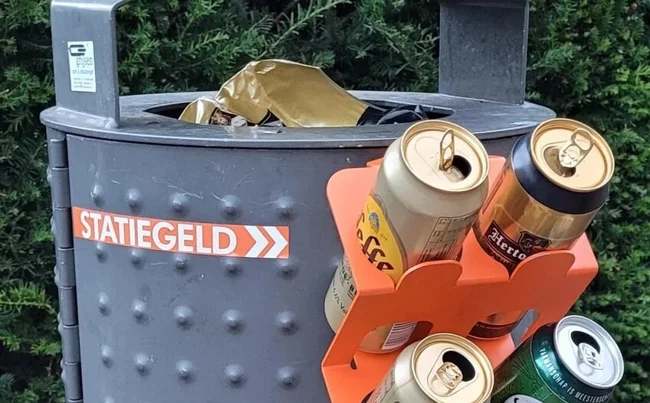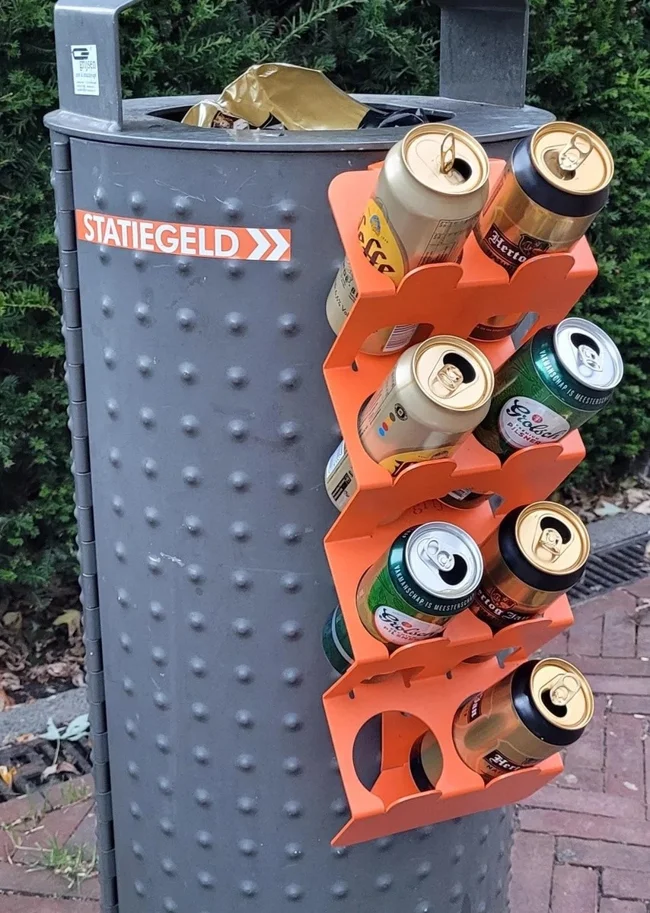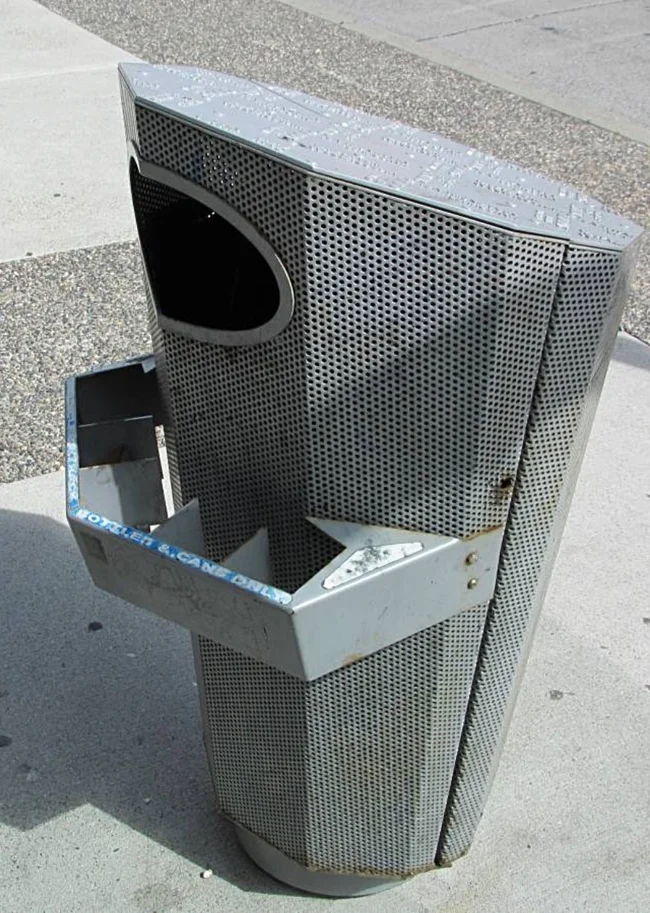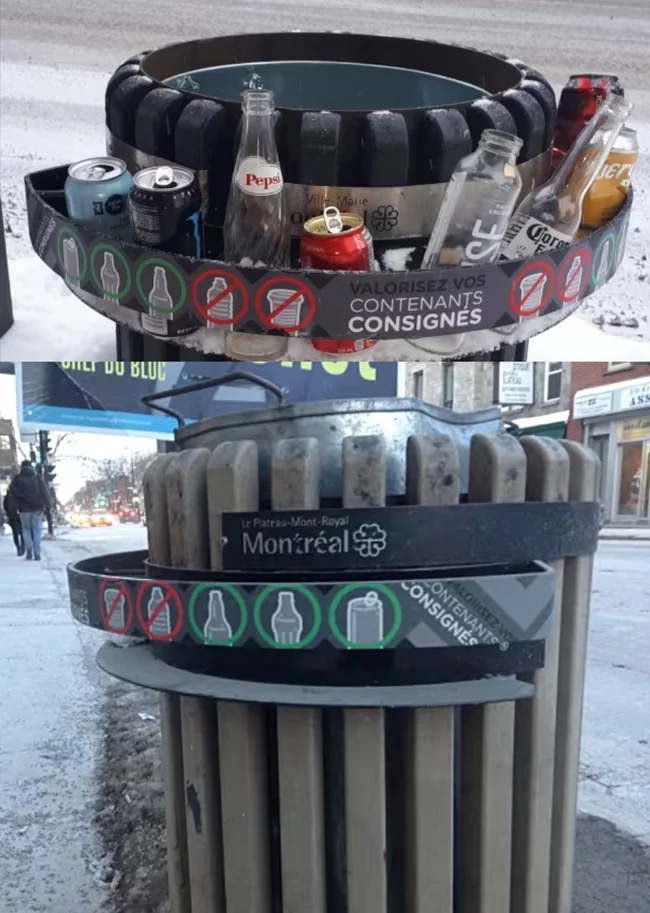Don't throw away the jar! - why do many cities around the world make special stands for cans and bottles on trash bins (5 photos)
In many cities (including Europe and the USA) special holders for cans and bottles are attached to trash cans. The question of why could decorate the next episode of the program "What? Where? When?", although the question is not that difficult, if you think about it. 
But it is worth starting with the fact that such stands for containers on trash cans are made only in those countries where this container is accepted back for money. Surely those who have been to such countries have seen that often even the price tags for drinks indicate the cost of the can or bottle - the buyer pays for them separately, having the opportunity to then get their money back back.
Yes, it is not easy to do everywhere. 
In some countries or even individual cities, containers can be accepted back at the same store where they were purchased. In others, you need to go to a special collection point. 
So, returning bottles was not considered shameful either then or, especially, earlier. In the USSR, the price of glass containers was not written on the price tags, but everyone knew perfectly well that bottles should be returned and not thrown away.
I remember Kolya even flew into the future with an empty glass container...
True, at that time they did not really try to promote this as "protection of the environment" and the like. It was simply more profitable for manufacturers to use old containers rather than buy new ones. Especially when it came to a planned economy and the operation of a single system throughout the country.
One must think that in any other countries where bottles and tin cans can be returned and paid for (as in our country, by the way), they are actually guided by exactly the same considerations. 
And, let's go back to the beginning of the conversation, one could assume that the presence of such stands on the trash cans is somehow connected with this. Of course, yes - but not quite directly. The thing is that it is usually the homeless who collect cans and bottles, not ordinary citizens, since (like us) there is little desire to go to the collection point to return a small amount.
And the homeless collect a lot of such containers, and often work in a coordinated manner - some collect, others go to hand them in.
And, of course, it is easier for them to collect dishes from such stands.
Wow, how they take care of the homeless there! - you might exclaim. And again, you will be right and wrong at the same time. Because in this case, it is more of a real fight for the environment than caring for the homeless. 
In general, in fact, this whole initiative initially solves a completely different problem. The fact is that those very homeless people or those who simply want to do their own small business by recycling containers, all this garbage... simply poured out of the trash cans to take their cans and bottles.
At some point, this really became a problem, because before special people put it all back, the garbage had time to fly around the area.
Unsanitary conditions, animals, double work, after all - collecting it all again is not very fun either.
That's why the idea came up to make such holders on trash cans. As a rule, there is no point in getting into the trash can - collectors of cans and bottles just take theirs and leave. The result is cleanliness, order and a rather large business in recycling.























